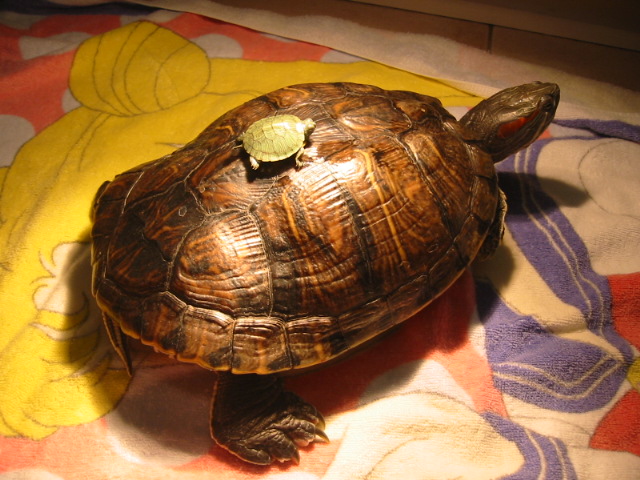 Pet Turtle Care
Pet Turtle CareSea turtles are being protected around the world. National parks are set up along with farms and other organizations that are attempting to protect them. Sea turtles are a difficult animal to protect though because of their migratory habits. They aren''t the kind to stay in one place, and they only come ashore to nest. Most males will never come out of the water once they enter the ocean as a hatchling. The only time they may be seen out of the water is if they are basking in the sun.
Tagging and conservation is a big part of protecting the sea turtles. Tagging helps see the patterns where females are nesting, and helps determine migratory habits.
In Mexico we got to be a part of the protection of the sea turtles. Down the beach from where we were staying was a park protecting the sea turtles. The rangers were there and described sea turtles to us. They told us they were endangered, so they were protecting them. Also, moving the eggs to a safe environment would protect them from predators. Only about one in every thousand that hatch actually survives in the wild, so getting as many to hatch as possible is a good thing.
We got to hold the turtles, and then went down to the water when it got dark out. They took the baby turtles down there too. We all stood in a line where the water just reached us. They gave everyone 2 or 3 baby sea turtles that we let go into the water. None of us were able to move after we let them go because not all of them made it to the water right away. It was a neat experience to see that many baby sea turtles going into the water.
In Costa Rica they also have a park that is protecting the sea turtles. We were able to actually stay at the reserve as volunteers this time though. The volunteers get to go along on the beach patrols. Every night all night someone is patrolling the beaches to make sure every nesting female is tagged, and that they nest is accounted for. They want to know how many eggs are laid, and everything about the nesting female.
If the female hasn''t already been tagged, the ranger or a volunteer will tag the female. This is done with a hand held gun which is similar to piercing your ear. They always check the female first with a transmitter to see if she has been tagged though.
There is a whole sheet of paper work to fill out when a nesting female is seen. They fill out where she was, the date, the time, and how she came to the shore. They want to know everything, so all the paper work must be filled out correctly.
At this park, there is also a hatchery the eggs are taken to. This is the same type of thing as in Mexico, where they are giving every turtle the best chance possible for survival.
Article source: http://www.thefreelibrary.com

























